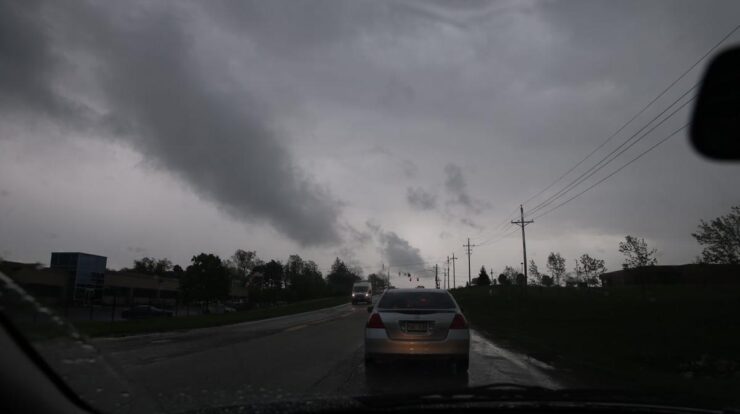
In the heart of Nebraska, Omaha faces the wrath of tornadoes. Omaha Tornado Today delves into the history, safety measures, forecasting systems, damage assessment, and research surrounding these formidable weather events.
From understanding the frequency and impact of tornadoes in Omaha to exploring the advanced technologies used for prediction and warning, this comprehensive guide equips residents with crucial knowledge to navigate these hazardous storms.
Omaha Tornado History

Tornadoes have been a part of Omaha’s history, leaving a trail of destruction and resilience. In 1913, an F4 tornado tore through the city, killing 100 people and causing widespread damage. Another devastating tornado struck in 1975, with an F5 rating and a death toll of 3. More recently, in 2019, an EF4 tornado caused significant damage to the city’s northwest side.
These events underscore the frequency and severity of tornadoes in Omaha, highlighting the need for preparedness and safety measures.
Geographical Factors Contributing to Tornado Formation
Omaha’s location within the “Tornado Alley” region makes it particularly susceptible to tornadoes. The convergence of warm, moist air from the Gulf of Mexico and cold, dry air from the north creates a breeding ground for severe thunderstorms, which can spawn tornadoes.
Additionally, Omaha’s flat terrain and lack of significant obstacles allow tornadoes to travel unimpeded, potentially causing widespread damage.
Tornado Safety Measures
Preparing for and responding to tornadoes is crucial for Omaha residents.
Before a Tornado
- Develop an emergency plan that includes evacuation routes and safe shelter locations.
- Practice tornado drills regularly with family members or colleagues.
- Build or identify a safe shelter in your home or workplace, such as a basement or interior room without windows.
- Stock up on emergency supplies, including food, water, a first-aid kit, and flashlights.
During a Tornado
- If a tornado warning is issued, seek shelter immediately in the designated safe location.
- Stay away from windows and exterior walls.
- Cover your head and neck with a blanket or pillow for protection.
- Monitor weather updates and follow instructions from local authorities.
After a Tornado
- Assess the damage and report any injuries or downed power lines to emergency services.
- Avoid entering damaged buildings until they have been inspected and cleared for safety.
- Cooperate with recovery efforts and follow guidelines from local authorities.
Tornado Forecasting and Warning Systems
Advancements in weather forecasting and warning systems have significantly improved tornado preparedness.
Weather Forecasting Techniques
- Doppler radar is a key tool for detecting and tracking tornadoes. It provides real-time data on wind speed and direction, allowing meteorologists to issue timely warnings.
- Satellite imagery and computer models help predict the development and movement of severe thunderstorms that can spawn tornadoes.
Warning Systems
- The National Weather Service (NWS) issues tornado warnings when a tornado is imminent or has been spotted. These warnings are disseminated through various channels, including TV, radio, mobile apps, and NOAA weather radios.
- Outdoor warning sirens are also used to alert residents in affected areas.
Tornado Damage Assessment and Recovery
After a tornado strikes, a comprehensive damage assessment is essential for recovery efforts.
Damage Assessment
- Structural engineers and other experts conduct thorough inspections to determine the extent and severity of damage to buildings, infrastructure, and property.
- Aerial surveys using drones or aircraft provide a broader perspective of the affected area.
Recovery Efforts
- Local authorities coordinate with federal agencies, such as FEMA, to provide assistance to affected communities.
- Debris removal, infrastructure repairs, and housing assistance are prioritized to restore normalcy and rebuild affected areas.
- Mental health support and counseling services are offered to individuals impacted by the trauma of a tornado.
Tornado Climatology and Research

Ongoing research efforts aim to improve tornado prediction and mitigation strategies.
Climatological Patterns
- Omaha experiences tornadoes primarily during the spring and summer months.
- The city’s location in the central United States places it in a region with a high frequency of tornado occurrences.
Research Initiatives, Omaha tornado today
- Scientists study tornado formation, movement, and impacts to enhance prediction models and develop early warning systems.
- Research on tornado-resistant building materials and construction techniques aims to mitigate the severity of damage caused by tornadoes.
Final Wrap-Up
As the winds subside and the skies clear, Omaha Tornado Today serves as a beacon of information and support for the community.
By embracing safety measures, staying informed through warning systems, and contributing to ongoing research, Omaha can emerge stronger and more resilient in the face of future tornadoes.
FAQs: Omaha Tornado Today
What is the average number of tornadoes in Omaha each year?
Omaha experiences an average of 1-2 tornadoes annually.
What are the most common safety measures to take during a tornado?
Seek shelter in a basement or interior room, stay away from windows, and cover your head with a blanket or pillow.
How does Doppler radar contribute to tornado forecasting?
Doppler radar detects the movement and rotation of storm clouds, providing valuable information for predicting tornado formation.




